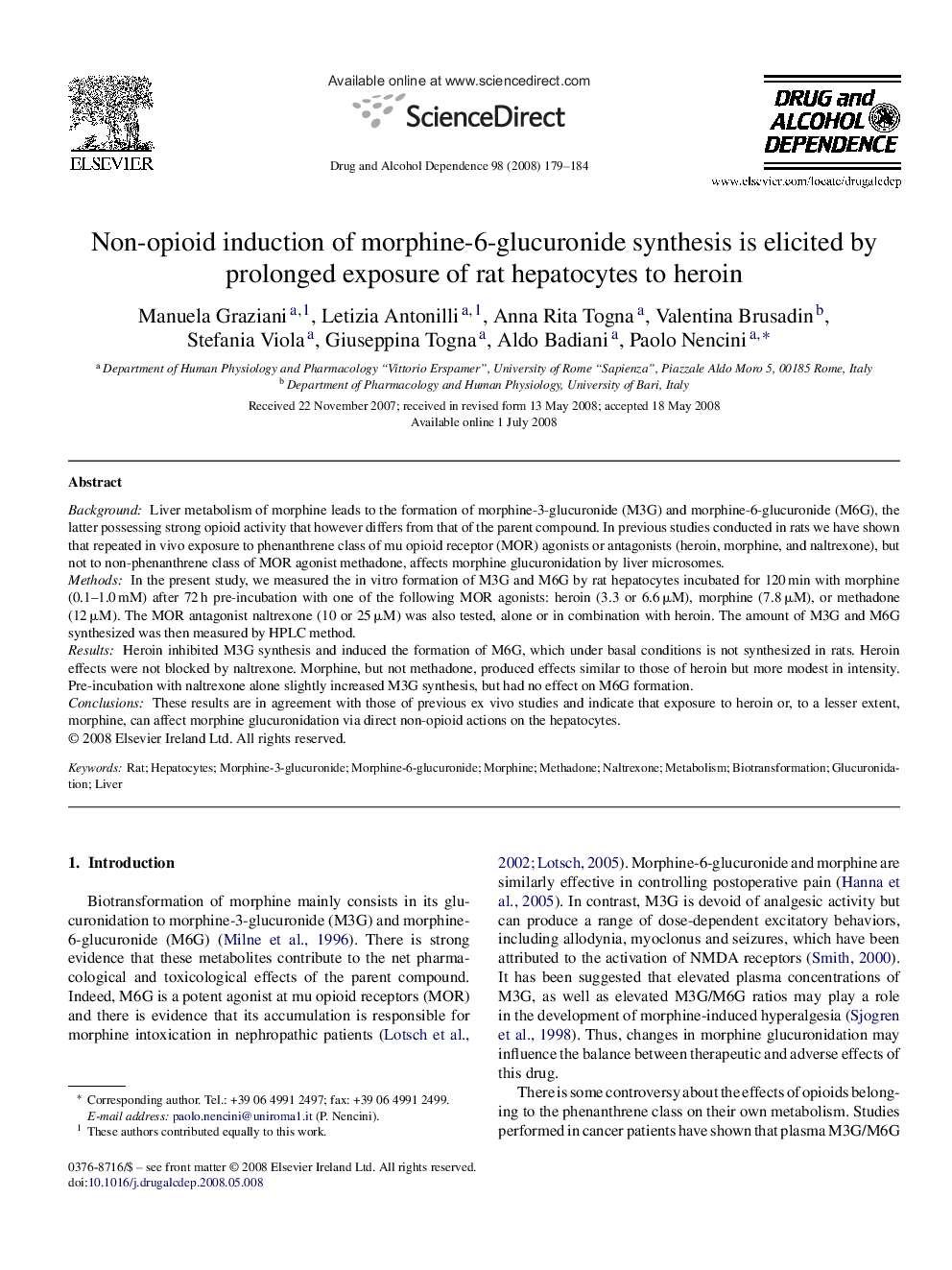| Article ID | Journal | Published Year | Pages | File Type |
|---|---|---|---|---|
| 1070913 | Drug and Alcohol Dependence | 2008 | 6 Pages |
BackgroundLiver metabolism of morphine leads to the formation of morphine-3-glucuronide (M3G) and morphine-6-glucuronide (M6G), the latter possessing strong opioid activity that however differs from that of the parent compound. In previous studies conducted in rats we have shown that repeated in vivo exposure to phenanthrene class of mu opioid receptor (MOR) agonists or antagonists (heroin, morphine, and naltrexone), but not to non-phenanthrene class of MOR agonist methadone, affects morphine glucuronidation by liver microsomes.MethodsIn the present study, we measured the in vitro formation of M3G and M6G by rat hepatocytes incubated for 120 min with morphine (0.1–1.0 mM) after 72 h pre-incubation with one of the following MOR agonists: heroin (3.3 or 6.6 μM), morphine (7.8 μM), or methadone (12 μM). The MOR antagonist naltrexone (10 or 25 μM) was also tested, alone or in combination with heroin. The amount of M3G and M6G synthesized was then measured by HPLC method.ResultsHeroin inhibited M3G synthesis and induced the formation of M6G, which under basal conditions is not synthesized in rats. Heroin effects were not blocked by naltrexone. Morphine, but not methadone, produced effects similar to those of heroin but more modest in intensity. Pre-incubation with naltrexone alone slightly increased M3G synthesis, but had no effect on M6G formation.ConclusionsThese results are in agreement with those of previous ex vivo studies and indicate that exposure to heroin or, to a lesser extent, morphine, can affect morphine glucuronidation via direct non-opioid actions on the hepatocytes.
